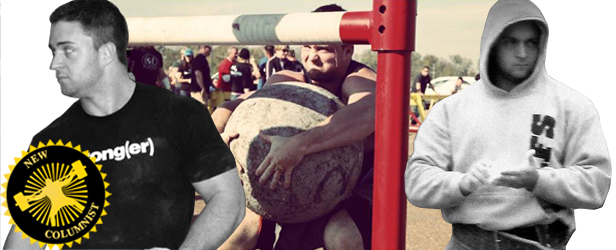
In the past week, I’ve either had a conversation with someone regarding one of these three points or saw someone make one these mistakes. While they are all random tips that don’t necessarily relate directly to one another, they do relate in the aspect that they may make you a better lifter when applied.
1. Most Guys Need to Squat in Olympic Shoes
I don’t have the best hip and ankle mobility around, and I know I’m not the only one. If your lower back rounds at the bottom of a squat and you look like a dog taking a dump, your hip or ankle mobility likely sucks also. By switching from Chucks or a traditional tennis shoe to an Olympic lifting shoe, you’ll more than likely be able to correct this issue and keep your lower back in a safe and optimal position due to the solid raised heel. This isn’t a reason to ignore your mobility work, but it allows you to squat safely while still working on it. Squatting in Olympic shoes also allows for a more stable base from which to squat compared to your typical tennis shoe. More stability = more strength. It also allows you to recruit the quads a bit more which is a good thing for most. Most guys squat raw with a narrow to moderate stance. If this sounds like you, give it a try and let me know what you think.
Note: This doesn’t apply to you if you’re a powerlifter with a wide-stance geared squat. If you are, stick with the Chucks or a similar shoe. Otherwise, I do recommend giving Olympic shoes a try—even if you have no mobility issues.
2. Specific Warm Ups
While I highly recommend everyone does a very thorough general warm up (foam rolling, dynamic movements, dynamic stretching, mobility work, etc.), I’ve noticed that some people are really screwing up their specific warm ups. (And by specific warm up, I’m referring to the warm up sets of the actual exercise you plan to perform). There seems to be two very opposite things going on. The first thing that I’m seeing is super high volume, high rep warm up sets that are accumulating way too much fatigue. We will call them “Lifter #1” as shown below. The other issue is having almost no warm up at all—guys who literally seem to jump right into their first work set. We will call them “Lifter #2," also shown below. While everyone is different, I typically recommend a lower volume, lower rep approach to warming up.
Let’s say someone was warming up to their first work set of 365 pounds on the bench press:
Lifter #1’s Warm Up:
45 x 15
135 x 10
185 x 10
225 x 8
275 x 5
315 x 5
365 x First Work Set
Lifter #2’s Warm Up:
135x5
225 x 1
315 x 1
365 x First Work Set
This is what I’d recommend:
45 x 8
135 x 5
185 x 3
225 x 3
275 x 1
315 x 1
365 x First Work Set
As you can see, Lifter #1 has done 53 total reps before his first work set. While not all of them are really all that taxing, the accumulation of reps will probably cause some accumulated fatigue. This will only hinder the lifter's actual work sets and more than likely limit what the lifter can actually do. And as you can see, Lifter #2 has done seven total reps before his first work set. Again, this is an issue on the other end of the spectrum. Not only is there an increased risk of injury, the CNS and the body is not prepared to handle the work set weights. This will also hinder the lifter's actual work sets and also likely limit what the lifter can actually do and increase the risk of injury. While my suggestion may not be the best fit for everyone, it accomplishes the goal of priming the body and the CNS to handle the heavier loads without the accumulation of fatigue and without increasing the likelihood of injury. Find what specific warm up works for you, but make sure you shy away from Lifter #1's and Lifter #2's approach.
3. Everything in Your Program Needs to Have a Purpose
Look at your training journal or training program very closely. Look at each exercise or movement and ask yourself, "what is the purpose of each and every exercise I have listed?" If you don’t have a clear-cut answer, it may not have much of a purpose at all. And just because you like doing something, that doesn’t give it purpose. Maybe you should replace it with something you dislike doing that actually has purpose. If you’re a powerlifter, it better increase your squat, bench, or deadlift. If it doesn't, it should work to balance out the body, prevent injury, or build muscle mass that will aid in one of the Big Three. Training economy is very important. Wasting time, effort, and energy on something without purpose is not the most efficient way to train. If you find something in your program without a clear purpose, I challenge you to remove it for 12 weeks and replace it with something that has purpose. If you realize after removing it that it did have a purpose, put it back in. If it had no purpose, chances are you’re now stronger or better in some way due to what you replaced it with.
Knowing that I encountered all three of these issues in the past week tells me that these aren’t rare exceptions. Other people in gyms across the world are having some of these same issues. Chances are, some of you reading this may need to apply one of these. If that’s you, give one of these a try and see how it works for you.










